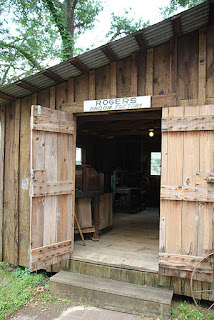It's a small park maintained locally with a nice garden, a few flags, and, of course, a historical marker.
The marker reads:
"Most decorated soldier in World War II. Born 4.5 miles south, June 20, 1924, sixth of nine children of tenant farmers Emmett and Josie Killian Murphy. Living on various farms, Audie Murphy went to school through the 8th grade in Celeste -- considered the family's home town. He had to quit school to help support the family, acquiring marksmanship skills by hunting to provide food. On his 18th birthday, after being rejected by the Marines because of his size (5 feet, 7 inches; 130 pounds), he enlisted in the Army while working in Greenville.
For unusual courage and bravery, he received 24 decorations, including the U. S. Congressional Medal of Honor; the French Legion of Honor, Chevalier: the Distinguished Service Cross; and a Silver Star.
After the war he became a successful actor, his most prominent role portraying himself in the film "To Hell and Back," his war career autobiography.
Following his untimely death in a plane crash in Virginia, May 28, 1971, and burial in Arlington National Cemetery, the U. S. Congress paid him a final tribute, dedicating a new veterans' hospital in San Antonio to the memory of this American hero.
Survived by widow Pamela, sons Terry and James."
We also noticed this mysterious handled receptacle of a sort:
And like so many museum exhibits with handles, we had to lift it up. And here's what we found:
A small notebook in a plastic baggie?!? Oh, yeah! This could ONLY be instructions for a dangerous and sexy spy mission! Let's crack it open:
Ok, so it's not a Mission Impossible type of impossible mission but rather a a geocache! Right here in our own backyard! If you are not familiar with here is a quick definition from Geocaching.com:
And HERE is the link to the actual thread on the Geocaching website about this specific geocache. So look around on you next road trip or even your next trip to the market. You'll never know what you'll stumble across.




















































